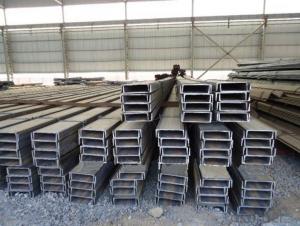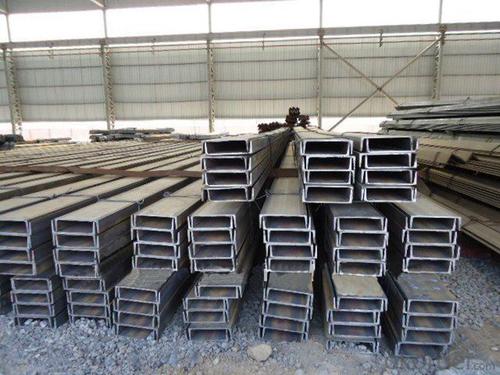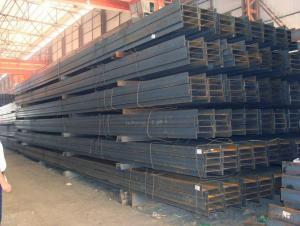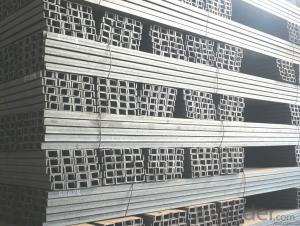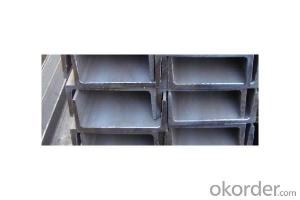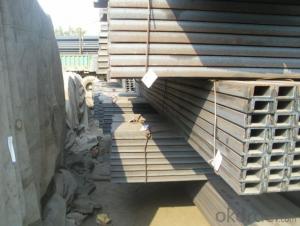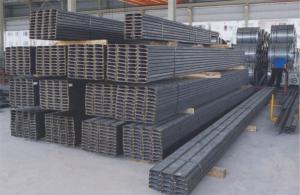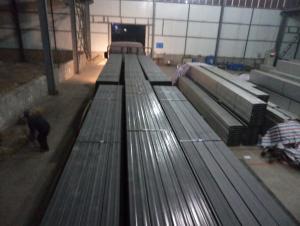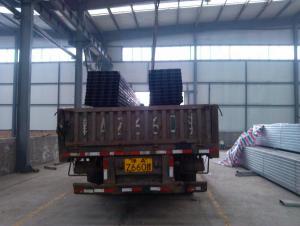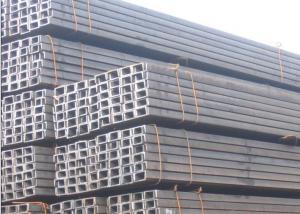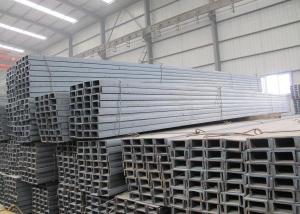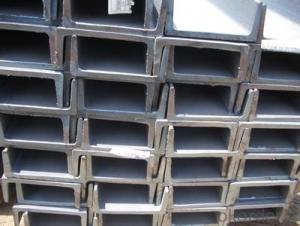Hot Rolled Channel Steel for Construction Use with High Quality
- Loading Port:
- China main port
- Payment Terms:
- TT OR LC
- Min Order Qty:
- 2000 PCS
- Supply Capability:
- 38000 PCS/month
OKorder Service Pledge
OKorder Financial Service
You Might Also Like
Hot Rolled Channel Steel for Construction Use with High Quality Details
| Standard: | GB,JIS | Dimensions: | 5#-32# | Grade: | Q235 |
| Place of Origin: | China (Mainland) | Brand Name: | CNBM | Model Number: | 5#-32# |
| Shape: | U Channel | Application: | Building | Perforated Or Not: | Not Perforated |
| Length: | 6M/9M/12M | Color: | Black | Surface: | Smooth |
| Alloyed or Not: | Not alloyed |
Packaging & Delivery
| Packaging Detail: | Sea-worthy packing or according to customer's request |
| Delivery Detail: | Within 30 days after receiving L/C |
Hot Rolled Channel Steel for Construction Use with High Quality Specifications
1. Place of Origin :China (Mainland)
2. Application :structure of architecture or machine industry
3. Length : 6m,9m,12m,or customized
4. Material:Q235B,Q345B,SS400
5. Model Number 100*50*5*7-----912*302*18*34
6. Chemical Composition and Mechanic Property of Q235 as below:
Channel Steel Theoreticial Weight
Specification & Model | Specification & Model | theoretical weight(kg/m) | ||
high | Width | Thickness | ||
5# | 50 | 37 | 4.5 | 5.438 |
6.3# | 63 | 40 | 4.8 | 6.634 |
8# | 80 | 43 | 5 | 8.045 |
10# | 100 | 48 | 5.3 | 10.007 |
12# | 120 | 53 | 5.5 | 12.059 |
14A# | 140 | 58 | 4.9 | 14.535 |
14B# | 140 | 60 | 8.0 | 16.733 |
16A# | 160 | 63 | 6.5 | 17.24 |
16B# | 160 | 65 | 8.5 | 19.752 |
18A# | 180 | 68 | 7.0 | 20.174 |
18B# | 180 | 70 | 9.0 | 23 |
20A# | 200 | 73 | 7.0 | 22.637 |
20B# | 200 | 75 | 9.0 | 22.777 |
22A# | 220 | 77 | 7.0 | 24.999 |
22B# | 220 | 79 | 9.0 | 28.453 |
25A# | 250 | 78 | 7.0 | 27.41 |
25B# | 250 | 80 | 9.0 | 31.335 |
28A# | 280 | 82 | 7.5 | 31.427 |
28B# | 280 | 84 | 9.5 | 35.823 |
30A# | 300 | 85 | 7.5 | 34.463 |
30B# | 300 | 87 | 9.5 | 39.173 |
32A# | 320 | 88 | 8 | 38.083 |
Hot Rolled Channel Steel for Construction Use with High Quality Pictures
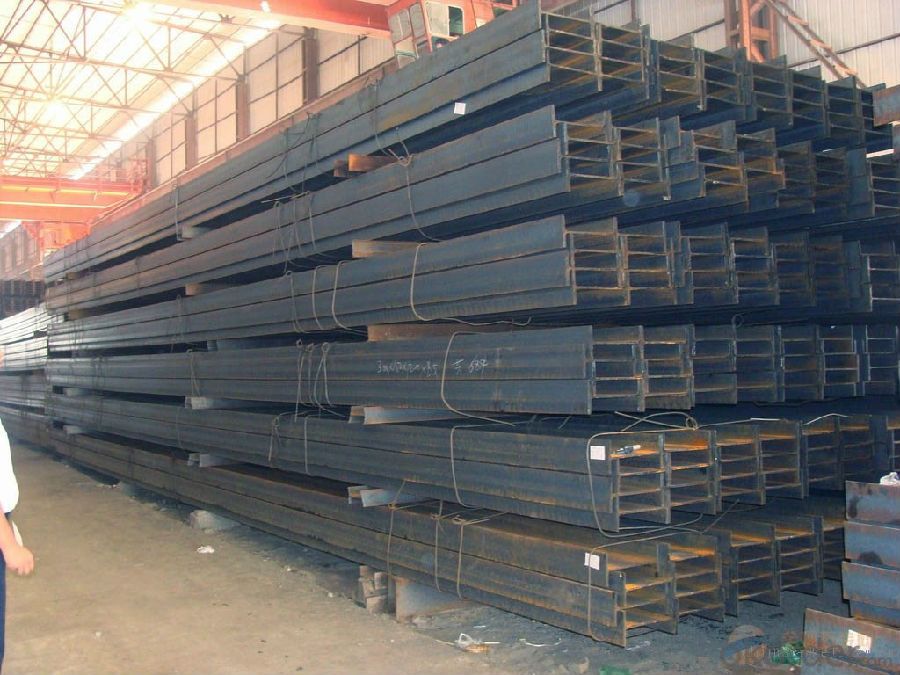

- Q: Are steel channels resistant to pests or termites?
- Steel channels possess a remarkable ability to withstand pests and termites. Unlike wood, which can be easily invaded by insects, steel channels create an unfavorable environment for these unwanted creatures. Termites cannot consume steel since it lacks cellulose, their main source of sustenance. Consequently, steel channels prove to be an exceptional option for construction endeavors in locations susceptible to pest or termite infestations. By ensuring enduring strength and safeguarding against such predicaments, they offer unparalleled reliability.
- Q: Can steel channels be galvanized or coated?
- Steel channels can indeed undergo galvanization or coating. Galvanization is a process wherein a layer of zinc is applied to the steel channel's surface to safeguard it against corrosion. This procedure involves dipping the steel channel into molten zinc or utilizing other techniques like electroplating or spraying to apply a zinc coating. By doing so, the zinc coating acts as a barrier between the steel and its surroundings, effectively preventing rusting. Alternatively, coating steel channels presents another option for corrosion protection. There exists a range of coating types, such as epoxy, polyurethane, or powder coatings, which can be applied to the steel channel's surface. These coatings establish a protective layer that shields the steel from moisture, chemicals, and other corrosive elements. Both galvanizing and coating steel channels serve to enhance their durability and extend their lifespan. The decision to employ galvanization or coating relies on various factors, including the intended application, environmental conditions in which the steel channel will be in use, and the desired aesthetic appearance.
- Q: What are the different methods of corrosion protection for steel channels?
- There are several methods of corrosion protection for steel channels, each with its own advantages and suitability for different environments. Some of the commonly used methods include: 1. Galvanization: This method involves applying a layer of zinc to the surface of the steel channel. The zinc acts as a sacrificial anode, corroding in place of the steel and protecting it from corrosion. Galvanization can be done through hot-dip galvanization, where the steel is immersed in a bath of molten zinc, or through electro-galvanization, which involves the electrochemical deposition of zinc onto the steel surface. 2. Painting or Coating: Applying a protective paint or coating to the steel channel can provide a barrier between the metal and the corrosive elements in the environment. There are various types of paints and coatings available, such as epoxy, polyurethane, or powder coatings, each offering different levels of resistance to corrosion and durability. 3. Cathodic Protection: This method involves connecting the steel channel to a sacrificial anode, such as zinc or aluminum, and creating an electrical circuit. The anode corrodes instead of the steel, effectively protecting it from corrosion. Cathodic protection is particularly useful in submerged or buried environments where galvanic corrosion is more likely to occur. 4. Stainless Steel: Using stainless steel channels is another effective way of protecting against corrosion. Stainless steel contains a high percentage of chromium, which forms a passive oxide layer on the surface, providing excellent resistance to corrosion. Stainless steel channels are commonly used in industries where corrosion resistance is crucial, such as marine or chemical industries. 5. Corrosion Inhibitors: These are chemicals that can be applied to the steel channel to inhibit or slow down the corrosion process. Corrosion inhibitors work by forming a protective film on the surface or by altering the chemical environment around the steel, making it less conducive to corrosion. However, the effectiveness and longevity of corrosion inhibitors may vary depending on the specific application and environment. It is important to consider factors such as the operating environment, anticipated lifespan, and budget when selecting a corrosion protection method for steel channels. Consulting with corrosion experts or engineers can help determine the most suitable and cost-effective method for a specific application.
- Q: What are the different cutting techniques for steel channels?
- There are several cutting techniques that can be used for steel channels, depending on the specific requirements and available equipment. Some of the common cutting techniques for steel channels include: 1. Shearing: This is a process where a cutting tool, such as a shear or a guillotine, is used to cut through the steel channel. Shearing is a quick and efficient method for cutting straight lines in steel channels. 2. Plasma cutting: Plasma cutting uses a high-velocity jet of ionized gas, known as plasma, to melt and cut through the steel channel. This technique is suitable for cutting both straight lines and complex shapes in steel channels. 3. Laser cutting: Laser cutting utilizes a high-powered laser beam to melt and vaporize the material, resulting in a precise and clean cut. Laser cutting is often used for intricate and detailed cuts in steel channels. 4. Waterjet cutting: Waterjet cutting involves using a high-pressure jet of water mixed with abrasive materials to cut through the steel channel. This technique can handle a wide range of materials and thicknesses, providing clean and accurate cuts. 5. Sawing: Sawing involves using a saw blade with teeth to cut through the steel channel. Depending on the thickness and size of the channel, different types of saws, such as band saws or circular saws, may be used. 6. Flame cutting: Flame cutting, also known as oxy-fuel cutting, involves using a fuel gas and oxygen flame to heat and melt the steel channel, followed by a jet of pure oxygen to blow away the molten metal. This technique is effective for cutting thick steel channels and is commonly used in heavy-duty applications. Each cutting technique has its advantages and limitations, depending on factors such as the desired cut quality, speed, precision, and the material thickness. It is important to consider these factors and choose the appropriate cutting technique for the specific application.
- Q: Can steel channels be galvanized?
- Yes, steel channels can be galvanized. Galvanization is a process of applying a protective zinc coating to steel to prevent rusting and corrosion. Galvanizing steel channels can provide long-lasting protection and can be done through either hot-dip galvanizing or electroplating methods. Hot-dip galvanizing involves immersing the steel channel in a bath of molten zinc, while electroplating involves using an electric current to deposit a layer of zinc onto the steel surface. Galvanized steel channels are commonly used in various industries, including construction, infrastructure, and manufacturing, due to their enhanced durability and resistance to environmental factors.
- Q: Are steel channels suitable for underground applications?
- Yes, steel channels are suitable for underground applications. They are durable, strong, and resistant to corrosion, making them ideal for withstanding the harsh conditions found underground. Additionally, steel channels can be easily customized to fit specific requirements, making them versatile for various underground applications.
- Q: How do steel channels contribute to the stability of a structure during tornadoes?
- Several factors contribute to the stability of a structure during tornadoes, and steel channels are one of them. One way in which steel channels contribute is their composition of high-strength steel, which enables them to resist both compression and tension forces. This strength allows the channels to endure the powerful winds and forces generated by tornadoes. Furthermore, steel channels are commonly utilized as structural members in building framing. They are typically positioned vertically or horizontally between the main columns and beams, creating a interconnected support system. This system helps distribute the load and forces generated by tornadoes throughout the structure, preventing concentrated stress points and potential collapses. Moreover, steel channels can be strategically placed in load-bearing walls or used as bracing elements to enhance a building's structural integrity. These channels act as reinforcements, providing additional support and stiffness to the walls, which is particularly important during tornadoes when the structure is subjected to intense wind pressures. This reinforcement helps prevent the walls from buckling or collapsing under extreme forces. Additionally, steel channels are often integrated into the construction of storm shelters or safe rooms, which are specifically designed to protect occupants during tornadoes. These channels are incorporated into the walls, ceiling, and floor of these shelters, creating a sturdy and secure enclosure capable of withstanding the destructive forces of a tornado. In conclusion, steel channels play a crucial role in enhancing the stability of structures during tornadoes. Their high strength, ability to distribute forces, and reinforcement capabilities make them an essential component for ensuring the safety and integrity of buildings in areas prone to tornadoes.
- Q: Can steel channels be used for supporting exterior shading devices?
- Certainly! Exterior shading devices can indeed be supported by steel channels. These channels are widely utilized in construction due to their robustness and resilience, making them an ideal choice for creating a strong framework for awnings, canopies, or louvers. By securely fastening these channels to the building's outer surface, a stable foundation is established for the shading device. Moreover, steel channels can be tailored and manufactured to meet particular design specifications, offering versatility in the installation process of exterior shading devices.
- Q: Are steel channels customizable in terms of size and shape?
- Steel channels can be customized in terms of their size and shape, providing versatility as structural components. This customization includes adjustments to length, width, depth, and even the cross-sectional shape. This flexibility allows for the creation of various profiles, such as C-channels, U-channels, or more intricate shapes like Z-channels. By customizing steel channels, engineers and designers can tailor these structural elements to suit specific applications, guaranteeing optimal performance and efficiency across different industries, including construction, manufacturing, and infrastructure.
- Q: What does channel 150*8 mean?
- The back grade of channel steel is 150MM, and the thickness of channel steel is 8MM
Send your message to us
Hot Rolled Channel Steel for Construction Use with High Quality
- Loading Port:
- China main port
- Payment Terms:
- TT OR LC
- Min Order Qty:
- 2000 PCS
- Supply Capability:
- 38000 PCS/month
OKorder Service Pledge
OKorder Financial Service
Similar products
Hot products
Hot Searches
Related keywords
